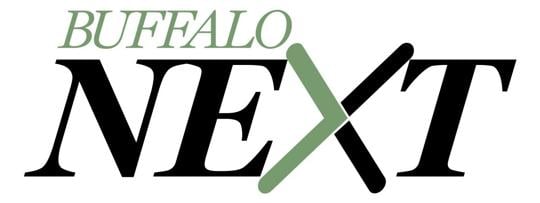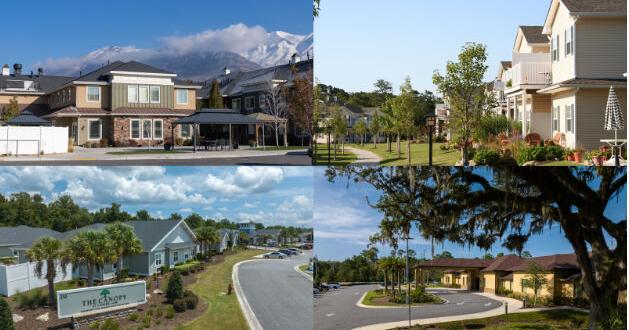Real estate has long been known for generating significant returns, helping investors build wealth steadily over time. However, according to real estate mogul and YouTube personality Ben Mallah, the potential gains can far exceed even the most ambitious expectations.
-
Accredited investors can become the landlord of Walmart, Whole Foods or Kroger — and benefit from regular distributions without lifting a finger. Here’s how
-
Car insurance premiums in America are through the roof — and only getting worse. But less than 2 minutes can save you more than $600/year
-
These 5 magic money moves will boost you up America’s net worth ladder in 2024 — and you can complete each step within minutes. Here’s how
During an appearance on “The Iced Coffee Hour” podcast with Graham Stephan and Jack Selby, Mallah shared his preferred wealth-building strategy in real estate.
“Every time I had a property, I improved it and I went and I increased the value in it, I would refinance it … because that’s a non-taxable event — pull my money out of it and still cash flow,” he explained.
Refinancing a property involves replacing the existing mortgage with a new loan. If the property has appreciated in value, an investor can often take out a larger loan based on the higher current value. For example, in a cash-out refinance, an investor takes out a larger loan, uses it to pay off the old mortgage, and receives the remaining balance as cash. Since the proceeds from a refinance are technically a loan rather than income, they’re generally not subject to taxes. This strategy allows investors to tap into the property’s equity while still retaining ownership and cash flow.
This is a real estate investment strategy more commonly known as the BRRRR method, where BRRRR stands for buy, rehab, rent, refinance and repeat.
Mallah emphasized how this approach transforms his returns. “The ultimate goal to me, has always been in real estate is, you buy something, you improve it — now it’s worth more money, then you get your money back. So now I have nothing invested in my property, but I still cash flow. What kind of return is that?” he asked.
“Infinite,” both Mallah and Stephan replied. Let’s take a closer look at the math behind this claim.
Mallah described a strategy where, once a property’s value has increased, you “get your money back” through refinancing. By pulling out his original investment, Mallah is no longer out-of-pocket on the property, yet it continues to generate rental income.
In simple terms, Mallah argues that by removing his initial investment through refinancing, his personal capital in the property effectively becomes zero. If you calculate the return by dividing the property’s cash flow by the remaining personal investment (now zero), the result could be infinite.
To be clear, when you divide a number by zero, it’s undefined. And while dividing a positive number by something approaching zero can result in a value approaching positive infinity, “infinite return” here is more of a conceptual term. It reflects that he continues to generate cash flow with no initial investment capital remaining at risk, but from an accounting perspective, the initial investment isn’t truly erased — it’s just been recouped. And for accounting, the return would be calculated based on the full cycle of the cash flows and capital involved, making the “infinite” concept more motivational than strictly accurate.
There are potential pros of the BRRRR method, like the wealth building opportunities, but there are several pitfalls and risks investors should be aware of. Chase Bank mentions high starting costs, the difficulty of finding properties that have potential for renovation and adequate rental income, the possibility of investing in property that won’t appreciate in value or gain tenants and the significant commitment required for renovating and managing rental properties.
“The BRRRR method isn’t for everyone. BRRRR investors need to devote time to identifying worthwhile properties, rehabbing them, and then serving as a landlord for potentially multiple tenants simultaneously. You also need to have knowledge and experience in real estate and a keen eye when it comes to renovations. If you fail to miscalculate market value, rehab costs, or failure to secure tenants when you need them, you can take a loss,” says David Greene, a real estate broker writing for BiggerPockets. “If you’re going to BRRRR, we don’t recommend doing it alone. Work with a team of skilled experts who have the time and know-how to make the most of the BRRRR experience.”
Read more: Rich, young Americans are ditching the stormy stock market — here are the alternative assets they’re banking on instead
Still, Mallah highlighted the power of this strategy: “So now here I am. I’m sitting with all these properties that I refinanced. I got all my money back so I can deploy it in other deals, or whatever, spend it, and I’m still cash flowing, and that’s great. I own businesses, real estate, without any money invested.”
When asked about his current portfolio, Mallah told Stephan and Selby, “Today, we’re sitting on a very large portfolio of what I like to call necessity real estate, or essential real estate.”
He explained that while he invests in retail, he focuses on properties that are resistant to online competition — businesses that, as he puts it, “the internet can’t hurt” and “Amazon can’t hurt.” Providing examples, he said, “I like food, I like necessity services like hair, nails, food, good, strong restaurants, dentist, medical … things that people can’t go online and accomplish.”
In a world where the internet has dramatically shifted consumer habits, Mallah’s approach highlights the importance of focusing on essential, in-person services that are less vulnerable to digital disruption.
Of course, not everyone has the capital or time that Mallah does to purchase these assets outright and manage them. However, today, publicly-traded real estate investment trusts (REITs) and real estate crowdfunding platforms provide ways for average investors to put money in properties that fulfill essential needs, such as grocery stores, healthcare facilities, residential housing, and logistics centers.
It’s important to note that real estate crowdfunding online is relatively new and comes with several risks, like a lack of liquidity, that investors should fully understand before they invest any money.
In addition to refinancing, Mallah credits the 1031 exchange rule as a cornerstone of his wealth-building strategy, using this powerful tax-deferral tool to continually expand his real estate portfolio.
“What created my wealth was pretty much based on the 1031, you know, deferred tax exchange that the IRS laws have,” he said.
Under U.S. tax law, a 1031 exchange allows an investor to sell a property and reinvest the proceeds into a “like-kind” property without immediately paying capital gains taxes on the sale. This deferral means Mallah can retain more capital to reinvest, enabling him to purchase progressively larger or more lucrative properties, amplifying his wealth over time.
Mallah also highlights timing as crucial to his success. By selling at opportune times, he maximizes property values before executing a 1031 exchange, capturing peak profits and reinvesting them into new assets while deferring taxes on each sale.
“Everything is timing. When the market goes up, there might be even more value in it … So now I might decide, I want to move, I want to raise cash, I want to do some bigger deals, I might sell it, but if I sell it, I’ve always 1031’d into the next deal” he explained.
This disciplined approach has worked well for Mallah, fueling his growth for over three decades. “For over 30 years I’ve been doing that. I never touch the money from a sale. The money gets reinvested into the next deal. And that kind of forced me to grow,” he remarked.
This article provides information only and should not be construed as advice. It is provided without warranty of any kind.


